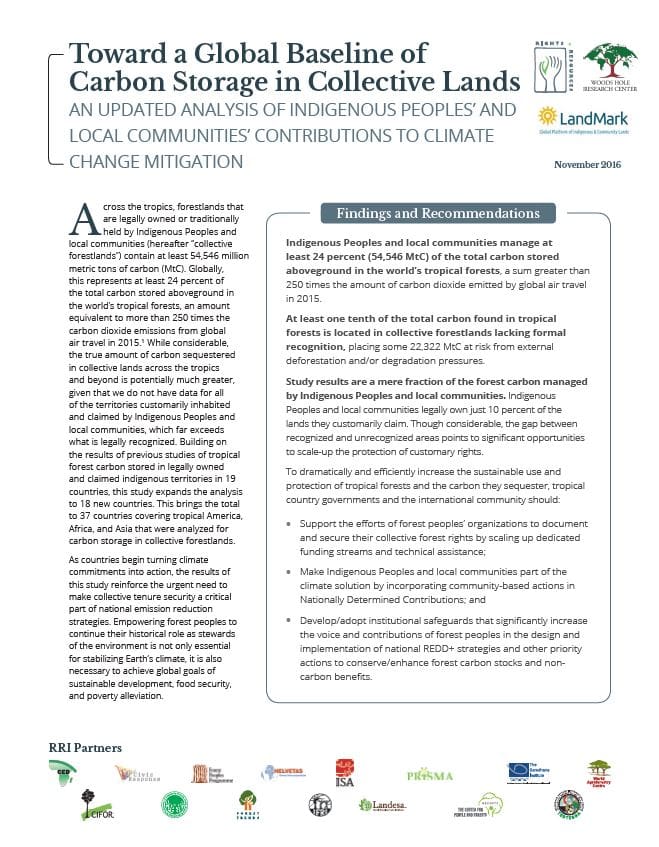Date: November 2, 2016
A new report quantifies the carbon stored aboveground in tropical forests that are legally owned or traditionally held by Indigenous Peoples and local communities in 37 countries across tropical America, Africa, and Asia. The report launches a long term collaboration among the Woods Hole Research Center, Rights and Resources Initiative, and World Resources Institute to continue tracking Indigenous Peoples’ and local communities’ role in carbon sequestration globally, with goals of adding data over time for additional countries, relevant non-forest ecosystems, and traditionally held lands that lack formal recognition. This work is a continuation of groundbreaking studies from 2014 and 2015 initiated by a dedicated group of scientific, policy, and indigenous organizations.
https://doi.org/10.53892/ABQR3130


